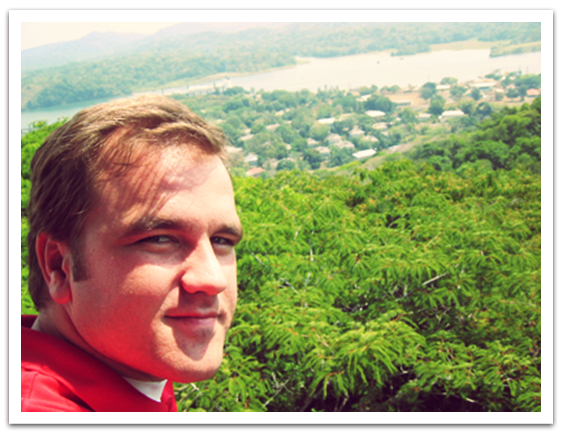See the video below for a great overview on the topic as well as the debates I've had on this topic with Mormon apologists.
Quick Overview Video
Debate With Mormon Apologists
The following is a copy/paste from Influential 'Anti-Mormon Liar' Debunks:
“Several of the towns on this author’s list were not even in existence at the printing of the Book of Mormon. Other locations were remote villages hundreds of miles away in places like Canada—hardly the land of Joseph’s youth.”
VERDICT:

"Several of the towns on this author's list were not even in existence at the printing of the Book of Mormon." This was true in the original CES Letter that I wrote 4 years ago, which I immediately corrected when the errors came to my attention. It is not true for the updated and revised CES Letter today. So, that’s a false and misleading claim and statement from Dustin.
I have already done a thorough line-by-line detailed response and rebuttal on this. I have already gone through this with FairMormon and I revised the list based on evidence. You can find my response here: http://cesletter.org/debunking-fairmormon/book-of-mormon.html#8
An important concept to understand on this topic:
In the 1980s, I lived in Diamond Bar, California. In the early 20th century, it was known as “Diamond Bar Ranch,” and it was at the time one of the largest working cattle ranches in the western United States. In the 1950s, it was acquired by Transamerica Corporation for the purpose of developing one of the nation’s first master-planned communities. It was after Transamerica’s acquisition that it gave the “Diamond Bar” name to its new master-planned community.
So, what does this mean for this discussion? Fast forward into the distant future, 150 years from now. The only information that you have about Diamond Bar is that it was a city in California and that it was incorporated as a city on April 18, 1989. Your first natural assumption would be that prior to 1989, Diamond Bar didn’t exist, at least not under the name “Diamond Bar.” However, this assumption would be false, as the name goes back to the early 20th century, as I explained above.
One of the apologist’s strategies and arguments for many of the names is to pull in the dates from Wikipedia and other sources of when the towns were incorporated so as to say, “See?! This town wasn’t incorporated until so-and-so, which is so-and-so years after the publication of the Book of Mormon!” The problem with this strategy and approach is that the date of incorporation does not always mean that the town and its name did not exist for decades before its incorporation, as was the case of Diamond Bar.
Here are more examples of Date Settled vs. Incorporated as a Town/City, this one focused on towns in the Commonwealth of Massachusetts. Notice the gap between settlement and incorporation dates of some of the towns are 100+ years.
Another important note I want to make here is that Vernal Holley is dead. We can’t contact him to find out exactly where he got his sources. FairMormon, for example, made the strawman that these towns/cities were discovered only through maps may not be fair as to how Holley found some of the towns. He may have used letters, newspapers, post office records, obituaries, local city/county library records, etc. in which records and books are not accessible online. We do not know.
This is evident in the "Jerusalem" claim. FairMormon claimed that Jerusalem, Ohio does not show up on a 1822 map. If one searches on the internet for when Jerusalem was first settled, they won't find any information. So, the logical conclusion would be to assume that Jerusalem wasn't established before the publication of the Book of Mormon. However, this would be incorrect as there is evidence that the first house in Jerusalem, Ohio was built in 1825. I was able to locate a resident who volunteered to go to the Monroe County Public Library in Woodsfield, Ohio and search for the information. She found it an offline book entitled Monroe County, Ohio: A History. Simply doing a Google search may not show the whole picture. There are still numerous local books and records that are hidden offline awaiting digitization.
There have been several times where FairMormon, for example, claimed that a town was debunked when I showed evidence that this wasn’t the case. As I mentioned above, I went through each one of the towns with FairMormon and kept those that have evidence support while abandoning those that do not have evidence support.
As you can see from the above Debunking Fairmormon link, I have corrected errors and the CES Letter no longer contains those errors. Many apologists like to hold onto my very first letter while ignoring my latest versions with the corrections made. I’m wrong forever regardless of my correcting my errors and mistakes in newer CES Letter versions.
Contrary to Dustin’s claim, the updated and corrected maps have not been debunked.
“Plus, almost half of the names or locations are also found in the Bible—including Biblical names that few are aware of such as Lehi, Boaz, Ramah, and Sidon.”
VERDICT:

Dustin attempts to dismiss some of these town names because they’re included in the Bible as well. Yes, some names are in the Bible, but that's beside the point. The fact that it also existed as a geographical place in Joseph’s time and place and in a setting that Joseph taught early on to be the geographical site of the Book of Mormon is the point.
A number of future Book of Mormon names appeared within alphabetized lists in common household reference works of young Joseph Smith’s time and place (published primary in conjunction with Bibles and dictionaries).
There was a book published in 1791 by John Walker entitled, A Key to the Classical Pronunciation of Greek, Latin, and Scripture Proper Names. In this book are a number of future Book of Mormon names, which appeared within alphabetized lists. This book was a common household reference in young Joseph Smith’s time and place. According to Larry Porter, “Walker’s Dictionary” was suggested for the curriculum in the Colesville, New York schools by the local commissioners in the fall of 1826.


Any of the names in the above screenshots of Walker's Dictionary look familiar?
This link does a side by side comparison between Book of Mormon names and Walker's Key Dictionary.

Born and raised in Southern California, Jeremy is a seventh generation Mormon of Pioneer heritage who reached every Mormon youth milestone. An Eagle Scout, Returned Missionary, BYU alumnus, Jeremy was married in the San Diego Temple with expectations and plans of living Mormonism for the rest of his life.
In February 2012, Jeremy experienced an awakening to the LDS Church's truth crisis, which subsequently led to a faith transition that summer. In the spring of 2013, Jeremy was approached and asked by a CES Director to share his questions and concerns about the LDS Church's origins, history, and current practices. In response, Jeremy wrote what later became publicly known as the CES Letter (originally titled Letter to a CES Director).
The CES Director responded that he read the "very well written" letter and that he would provide Jeremy with a response. No response ever came.
“I believe that members and investigators deserve to have all of the facts and information on the table...to be able to make a fully-informed and balanced decision as to whether or not they want to commit their hearts, minds, time, talents, income and lives to Mormonism. Anything less is an obstruction to the free agency of the individual.”
- Jeremy Runnells
It takes a lot of time, effort, and money to provide quality information in a quality way. It also takes a lot of resources to help those who have questions and who are trying to liberate themselves and their loved ones, while keeping their dignities intact. We want to be in the position to help, and you can help make that possible.
Your generous donations are tax deductible and will go a long way in helping us to continue to help the honest-in-heart seekers.

CES Letter Foundation is a 501(c)(3) nonprofit organization whose mission it is to liberate and empower doubting LDS individuals and mixed-faith marriages.